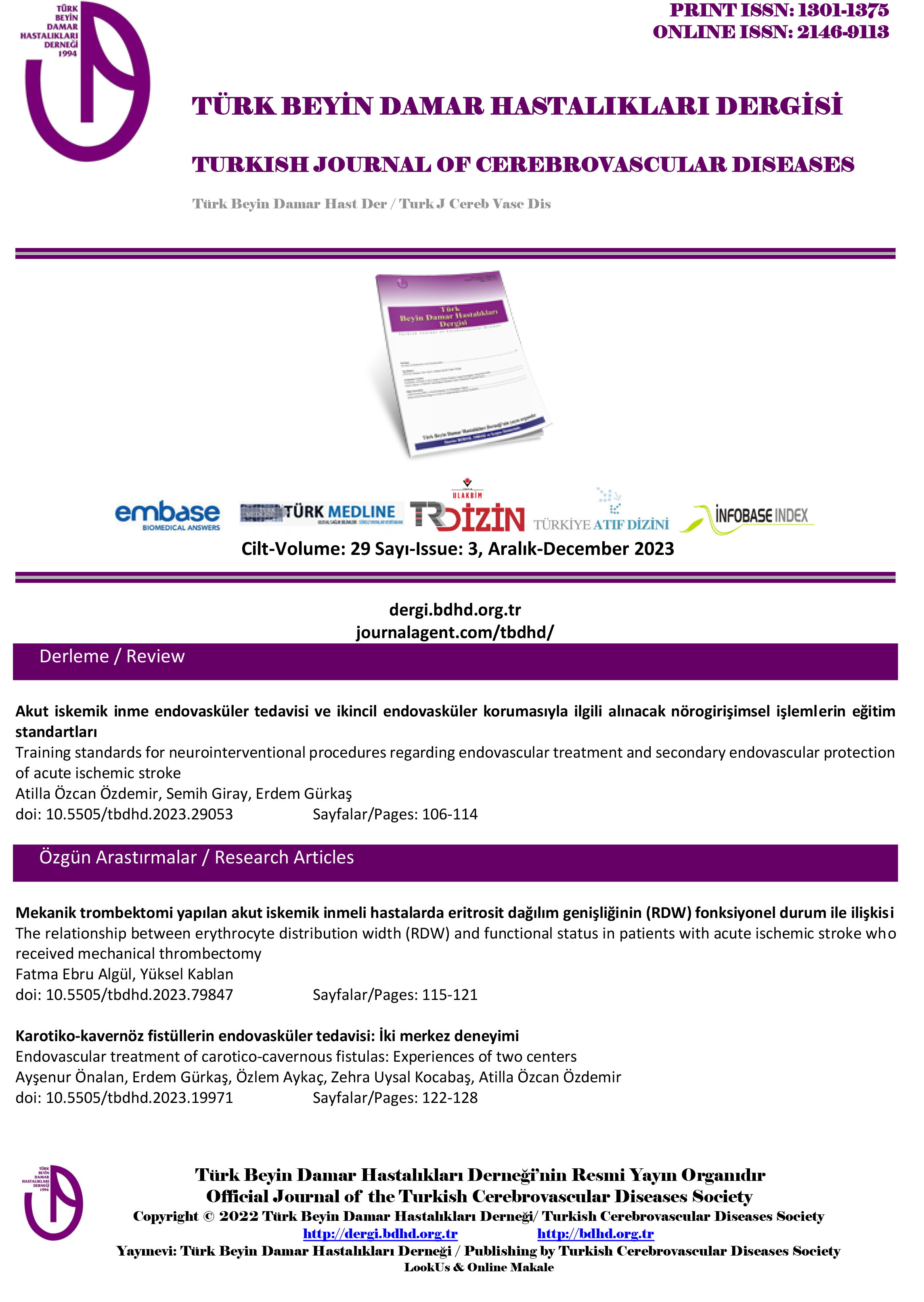YENİDOGAN SIÇANLARDA HİPOKSİK-İSKEMİK BEYİN HARABİYETİNDE DEKSAMETAZONUN NÖRON KORUYUCU ETKİSİNİN ARAŞTIRILMASI
Tülin ALKAN1, Nevzat KAHVECİ1, Zeynep KAHVECİ1, Kasım ÖZTÜRK1Uludağ Üniversitesi Tıp Fakültesi, Fizyoloji ve Histoloji-Embriyoloji Anabilim Dalları, İzmirYenidagan sıçanlarda hipoksik-iskemik beyin harabiyetinden 6 saat önce deksametazon ile tedavinin nöron koruyucu olduğu hipoksiden 3 saat önce ya da hemen sonra ise etkisiz oldugu gösterilmiştir. 7 günlük, 12 gramdan büyük sıçan yavrulanna eter anestezisini takiben sağ karotid arter oklüzyonu yapıldıktan sonra su banyosu içinde 37"C' de ısısı regüle edilen 0.5 lt'lik cam fanus içinde 2 saat boyunca %8 0 2 ve %92 N20 karışımı solutuldu. Girişimden sonraki 7. günde sıçanlar dekapite edilerek bregmanın +2,-2 mm. referans noktalarından koronal kesitler alındı ve 2,3,5 trifeniltetrazolium chloride (ITC) ile boyandı. Denek grubundaki sıçanlara (n:11) 0.1 mg/kg deksametazon IP enjekte edildi. Kontrol grubuna (n:10) ise aynı dozda% 0.9 NaQ enjekte edildi. Normal gruptaki sıçanlara (n;9) ise hiçbir işlem yapılmadı, denek ve kontrol grubundaki sıçanların beyin alanlarının karşılaşbnlmasında kullanıldı. Deksametazon uygulanan grupta, gross infarkt veya renk değişikliği saptanmadı. Kontrol grubunda sağ hemisferde korteks ve striatum boyunca belirgin infarki ve nekroz sahaları, hemisferik yapıda parçalanma ve likuifikasyon gözlendi. 1. koronal kesitte % 18.33 ve II. koronal kesitte %32.76'1ık infarkı alanı saptandı. Histopatolojik olarak, kontrol grubunda nöronal dejenerasyonla birlikte yaygın nekroz mevcuttu. Deksametazon grubunda ise H&E ve Nissl boyamalarında hafif derecede nöronal iskemik değişiklikler ve çok az sahada infarkı gözlendi. Sonuç olarak deksametazonun neonatlarda hipoksik-iskemik beyin harabiyetinin önlenilmesinde etkin bir nöron koruyucu olabileceği kanısına varıldı.
Anahtar Kelimeler: Deksametazon, hipoksik-iskemik infarkt, yenidoğan sıçan.THE INVESTIGATION OF THE NEUROPROTECTIVE EFFECT OF DEXAMETHASONE IN HYPOXIC-ISCHEMIC BRAIN INJURY IN NEONATAL RATS
Tülin ALKAN1, Nevzat KAHVECİ1, Zeynep KAHVECİ1, Kasım ÖZTÜRK1Uludağ University Faculty of Medicine, Departments of Physiology and Histology-Embryology, Bursa, TurkeyIt has been shown that pretreatment with dexamethasone up to 6 hours before hypoxia in 7- day old pups is protective against hypoxic -ischemic brain damage but it' s not so 3 hours before or after the insult. 7 day old Spraque-Dawley rats were anesthetised with diethyl ether and the right common carotid artery was ligated and divided. Following the recovery period the animals were placed in SOO ml. alrtight jar which was immersed in a water bath thermostatically regulated to 37°C and exposed 8% Oı 92% N10 gas mixture for 2 hours. Cerebral pathological changes were assessed in animals surviving 7 daysafter hypoxic-ischemic insult. The brains were sectioned coronally +2, -2 mm from bregma and immersedin 2,3,5 triphenyltetrazolium chloride (ITC). The pups were randomly treated with either vehicle (n= lO) or 0,1 mg/kg i.p. dexamethasone sodium phosphate (n= ll). A separate group of pups (no=9) had no surgical or hypoxic procedures nor did they have drug administration and were used for in the comparison of the effect of the damage . In dexamethasone group no gross infaretion or colour changings in ITC-stained slices were obseıved. In vehide treated group there was a marked infaretion or necrosis throughout cortex and striatum, disintegration of the structures of the hemispher and liquefication. In the I. corenal slice 18,33 % and U. coronal slices 32,76 % of infarcı area was detected. Histopatologically, there was extensive necrosis areas with neuronal degeneration on the right. In dexamethasone treated group although there was no gross infarct, H&E and Nissl stainings showed mild degree of ischemic changes and much less infarcted areas than vehide treated group. In condusion, we suggest that dexamethasone could be an effective drug of choice in preventing hypoxic-ischemic brain damage in the neo na te if given to the mother at the risk for fetal hypoxia.
Keywords: Dexamethasone, hypoxic-ischemic brain damage, neonatal rats.Makale Dili: Türkçe










